Courtesy of Kimberly King
| Website http://kimberlyking.org |
Here's a list of the 3 books Stanford is asking incoming freshman to read over the summer.
What would your list of "The Three Books" be (either for incoming freshmen, or in general)?
| Website http://kimberlyking.org |
What would your list of "The Three Books" be (either for incoming freshmen, or in general)?

Responses
Lee Patrick
Hopefully it will be an integrated approach that ensures the government and the people of Australia begin to support Australian made. If we have little production, manufacture, agriculture, aquaculture, Australian based retail etc. , no amount of skills adaptability and sociability is going to help. Personally I don't see future proofing a career as a possibility at this point - would love to attend the talk today. Go well Bernard.
Ivan Kaye response - Lee , if these manufacturing jobs can be automated, wouldn't it be more productive for a human to be adding value to another human , or learning , or doing something that he or she was passionate about?
I believe there will be many roles that are yet to be defined that people will be able to do to become productive.
Olivia Pennie
Without a white board to scribble on, here's how we look at it @ BEcoME.
The skills needed to thrive in a constantly changing world of work will constantly evolve.
Some of the skills will change rapidly and become redundant very quickly e.g. specific technical skills related to one role. Some of the skills will be more portable, relevant to more roles and slower to change as they are the enterprising skills that allow people to work well in many of todays (and as far as we can see) tomorrow's environments e.g. collaboration, creativity, critical thinking. (See FYA New Work Mindset Report for great detailed analysis).
Adaptability, self knowledge and the skills to navigate a life of learning and course adjustments sit above all of these and help you direct your own path.
We focus specifically and explicitly on this.
The complication and confusion comes, (I think) because adaptability and a design thinking approach are also a core part of STEAM when it's done right.
Absolutely agree that if STEM is delivered as teaching all kids to code then it falls way short of what they're going to need.
Reply to Olivia
Olivia Pennie (née Hall) Bernard Salt AM Some delineation or definition might help here:
1. ‘Fact-based’ skills – many with an empirical base – that are learned in the classroom, lecture theatre and by exam: generically >‘hard’<. STEM is a relatively easy example to illustrate, but e.g. languages, literacy and numeracy should feature.
2. ‘Personal tool kit’ >soft attributes< such as sociability, adaptability or resilience that are more shaped by experience, peer groups, mentor influence, etc. and can’t generally be formally studied.
Just a non-white board shared thought bubble
Jason Furness
Adaptability and sociability become much less important really quickly if the power system fails, the sewage system ceases to exist, office buildings and houses are structurally unsafe. STEM is essential to a societies continued existence.
I believe that STEM and skills are critically important for people to "learn" - however , the focus at school and an undergrad in my view , is the ability to "learn to learn" .
Ivan Kaye comment - Stem and task related skills - much of which will be augmented or indeed replaced by machines - are still key, but maybe the best place to learn these skills is "on the job" or "in the role".
Heather Mcgowan and Chris Shipley presented at our first "conversation" on "beyond the future of work - beyond 2050" and they pointed out the need to change the paradigm of our learning system.
Before the way we lived and worked was
Learn - do (in a job ) - Produce - Retire
And a human would ideally have 1 job all his or her life.
Nowadays the average Australian Millennial will have 14 jobs over his or her lifetime - and they will need to be upskilled throughout their work life.
The model needs to change to
Learn to learn - learn/work - produce - learn/work/produce - produce x 14
I believe a key foundation to the future of work is Vocational Education (VET)
And "Jobs" should be replaced by "Roles"
Over the next 6 months - we are having a series of conversations on the future of work - and the importance of HR personnel to "lead" the future
Let me know if you want to be part of the conversation and I will send you an invite to our forum.
Reid Moule
Agreed. So if we teach how to be resilient and how to adapt as a part of teaching computational thinking, because this is the basis of STEM or STEAM, then we are also teaching the process that can be regarded as the scientific method because it is a series of steps to evaluate an outcome. The scientific method is a process (hypothesis, method/materials, data, discussion, conclusion) in the same way that the Engineering cycle is a process and the Design Cycle is a process.
Dr John Blakemore
Bernard, we need both. You can't intelligently communicate with a mathematician if you can't be logical and understand maths
Dr Nick Somolov
Barnard, I have limited social skills and have been considered by many to be "Scottish" in my conduct - read in it what you like. But I resolved that future of the employment is in owning your own business particularly by STEM people otherwise they become "battery chickens" of science and are "culled" by age 35 as I experienced in CSIRO. My company is now producing one and only high quality fibre worsted comb in Australian history. Future of work is in Scottish FU CSIRO or large gov orgs (exclude defense orgs ) that exploit science and engineering people ( making future career an MBA option ) - most engineers & scientist ( one and the same ) should operate as "law partnership" in a consultancy on all levels - that is the Future. Even the most average engineer and scientist understands a company bottom line but most MBA's find it hard to understand the science behind new products or software... let the MBA fight over our crumbs. Let the scientist and engineers create the world of tomorrow on their terms.
Reid Moule
It has always been these skills. I can remember wondering why someone with these skills and no degree was higher in the ladder in a government department. than another who was much more qualified...and...the answers is...
Steve Southon
Agree Bernard Salt AM and think personal resilience will also play a big part as working environments change around us
Luke Marshall
Stay 'relevant'...whatever that takes
John Bradshaw
We all have a lot to learn, but one conclusion is abundantly clear: in a time of rapid technological and social change, we need to innovate to promote inclusive economic growth that helps everyone move forward. This requires a shared responsibility among those in government, across the private sector, and by individuals themselves.
New technologies like 3D design modelling and simulation, virtual and augmented reality assembly and training devices, new services like metrology and laser scanning and new tools ,robotic processes and new outward facing soft skills in language, foreign culture, and social media all undoubtedly help individuals develop new abilities and connectivity with new jobs in design /manufacturing and sustainment.
Unfortunately our governments collectively have failed to articulate and demonstrate to date that the innovation agenda and the business and research models of our research institutes and universities are in any way inclusive ones.
Promotion of the STEM agenda in Australia is instead focused around University education when in fact over 30% of STEM education is actually delivered in vocational training for Trade Apprenticeships and Technician ships,
Job seekers around the world agree on one thing: Google's parent company, Alphabet, seems like an awfully appealing place to work.
The tech giant places first on LinkedIn's 2017 Top Companies Global List, which highlights the 25 companies whose teams employees everywhere would most like to join. It also reigned atop LinkedIn's ranking of the most attractive employers in the U.S.
To determine this list, LinkedIn's data team analyzed billions of searches by the site's more than 500 million members, considering views of and applications to job postings, engagement with the company on LinkedIn and the number of employees that stay with the company for at least one year.
LinkedIn did not consider itself, or its parent company, Microsoft, for this list.
As usual, a number of tech industry headliners claim spots in the ranking, but the list also represents a broad range of companies from industries including professional services and consumer goods.
Read on for the 25 most attractive employers around the world:

Number of global employees: 350,000
GE offers eight different leadership programs, which provide recent college graduates training in areas ranging from engineering to human resources. Roughly a quarter of the company's current senior management completed one of GE's leadership programs.
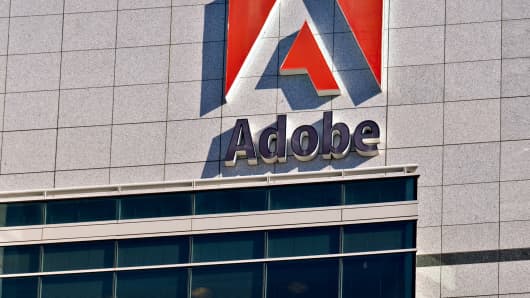
Number of global employees: 15,000
Adobe offers job titles as creative as its products, including Principal Artist-in-Residence, People Scientist and Vice President of Creativity. The company emphasizes that to be successful, employees should have a "learn-it-all" attitude.

Number of global employees: 144,000
Headquartered in France, Schneider Electric wants to increase sharing of skills and knowledge among its employees. Schneider's Global International Mobility Center facilitated 400 employees moving to new countries to work for the company last year.
22. EY
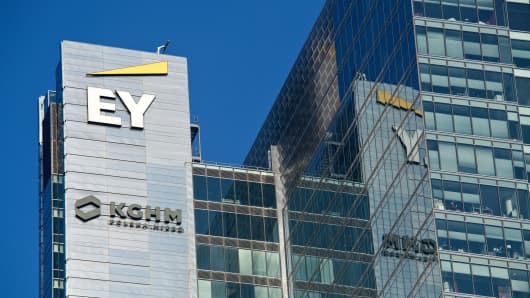
Number of global employees: 250,000
One of the accounting industry's "big four" firms, London-based EY currently has a quarter of a million employees, and expects its global headcount to reach 300,000 by 2020. In Germany, the country has introduced a refugee internship, offering four months of training to participants, who work with a mentor and are offered full-time employment following the program.

Number of global employees: 401,000
The global professional services firm offers 16 weeks of maternity leave and eight weeks of primary care leave. Further, Accenture provides free breast milk shipping for new mothers who travel as part of their role, or the option of as much as one year of local work following maternity leave.
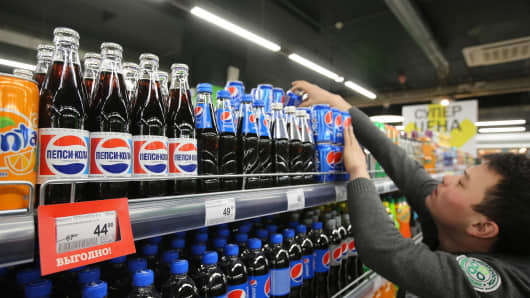
Number of global employees: 264,000
PepsiCo brands like Lays, Gatorade and Tropicana are available in upwards of 200 countries around the world. Recently, the company has honed in on creating healthier products, increasing research and development spending 45 percent over the past six years.
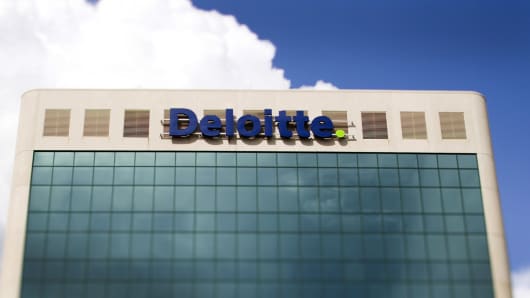
Number of global employees: 244,400
Employees of the auditor and consultancy have the opportunity to transfer to 150 countries where Deloitte has offices or teams — more than 6,000 employees took advantage of the option last year. The company's leadership training center, Deloitte University, has campuses in the U.S., Singapore, Belgium, France, India and Canada.

Number of global employees: 380,000
IBM uses its own technology, Watson, to enable the hiring process and pair resumes with relevant open positions.

Number of global employees: 126,000
Johnson & Johnson is made up of 275 companies around the planet and has nearly 130,000 employees, but the company's decentralized structure means that each of its subsidiaries has the independence to develop strategies that best serve its market.

Number of global employees: 195,000
Disney employees get free passes for themselves and family members to the company's theme parks, and trainers on the Disney English team use stories and characters from the company's movies to teach English to children in China.
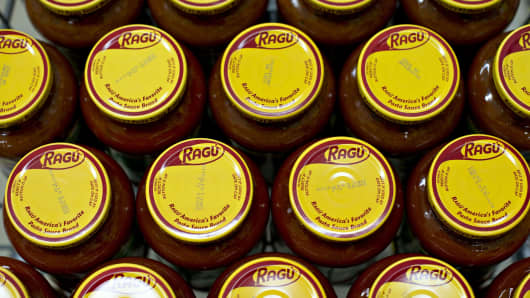
Number of global employees: 169,000
Got a taste for tea? The global consumer goods juggernaut employs a "Tea Expertise Director." The role entails leading employee tours through tea plantations and tasting more than 1,000 cups of the beverage each day.
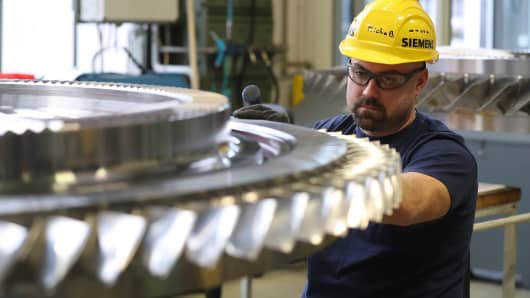
Number of global employees: 350,000
Siemens has cracked the code on employee retention: According to LinkedIn data, Siemens workers stay with the company 8.6 years, longer than the average employee tenure of any other company on this list.
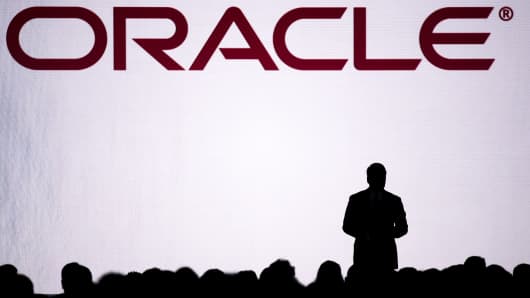
Number of global employees: 135,000
In August, Oracle broke ground on a public charter high school on the campus of its headquarters, and in the most recent fiscal year, the company reused or recycled 99.5 percent of the electronic waste it generated.
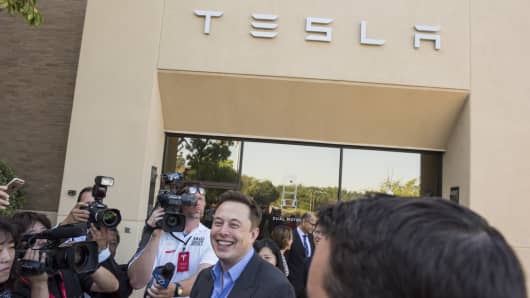
Number of global employees: 30,000
Tesla is now the most valuable U.S.-based automaker, with a $62 billion market cap and nearly 2,500 jobs open around the world. The company isn't turning a profit yet, so employees miss out on a lot of the perks often associated with the tech industry. But there's hope: In an email to staff, CEO Elon Musk recently announced that free frozen yogurt and an "electric pod roller coaster" will soon be part of Tesla's office landscape.
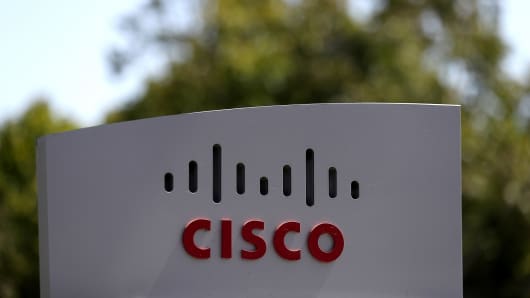
Number of global employees: 73,000
Cisco employees receive five days off beyond their vacation time each year to devote to volunteering, an initiative that's clearly been a hit — last year, employees put in 227,000 volunteer hours.
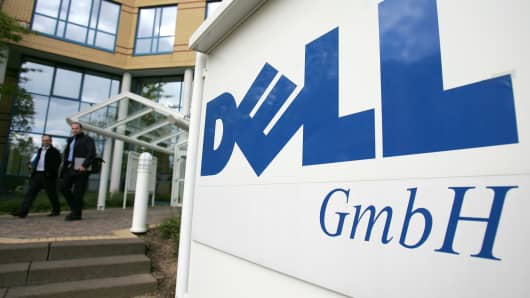
Number of global employees: 145,000
Dell offers employees a great deal of flexibility, including working from home, adjustable hours and the option of bringing your dog to work. More than 40 percent of the company's hires are referred by current employees, a strong vote of confidence in Dell's organizational style.

Number of global employees: 83,000
L'Oreal has 36 brands in 140 countries and has a strong focus on those at the entry level: Roughly one third of the company's hires last year were recent graduates, and the cosmetics giant's current CEO started as an intern with the company in 1978.

Number of global employees: 135,000
Nearly three quarters of management positions at the iconic luxury brand — which spans sectors including fashion, perfume, cosmetics, jewelry and wine — are filled with internal candidates.

Number of global employees: 25,000
About 40 percent of McKinsey consultants take on at least one international assignment each year. The global consultancy offers employees the chance to take as much as 10 weeks off between projects.

Number of global employees: 25,000
Salesforce continuously audits employee pay "to ensure equal compensation across gender, race and ethnicity," and recently introduced six months of parental leave for primary caregivers in the U.S.
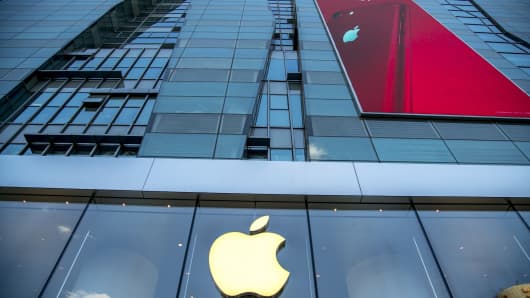
Number of global employees: 110,000
Apple offers employee stock grants to all its workers, including part-time and retail employees, and a little more than one-tenth of its retail workforce turns over each year, compared to 80 percent industry-wide. CEO Tim Cook has said that he plans on doubling Apple services like iTunes and Apple Pay over the next four years.
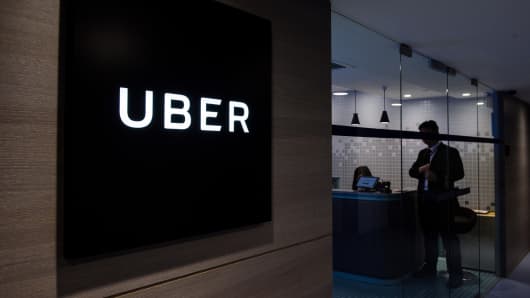
Number of global employees: 12,000
The ride-hailing company has had its share of negative headlines lately, and CEO Travis Kalanick announced on Tuesday that he'd be taking a leave of absence. Still, though applications dipped slightly after ex-employee Susan Fowler's explosive blog post, year over year, views of postings and applications to open positions on LinkedIn are up 35 percent.
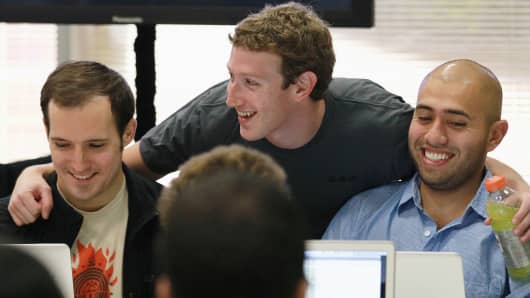
Number of global employees: 17,000
Facebook boasts 1.9 billion active users every month and is constantly on the hunt for the talent to help it grow its reach. "When you enter our buildings," says CEO Mark Zuckerberg, "we want you to feel how much left there is to be done in our mission to connect the world."
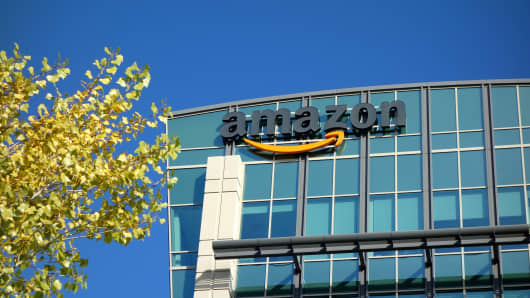
Number of global employees: 341,400
"The everything store" collected three Oscar trophies for its programming, introduced Prime video in India and delivered a package in the U.K. via drone — all in the past year. "We take risks and make big bets," Amazon told LinkedIn, "and when we fail, we apply the lessons learned and keep moving."

Number of global employees: 72,000
Google's parent company keeps employees engaged with cutting-edge opportunities: Upwards of 27,000 of the company's employees work in research and development, an area that Alphabet poured almost $14 million into last year. According to LinkedIn, it's "the opportunity and resources employees are given to tackle massive problems, stretching from creating self-driving cars to impeding extremism" that puts Alphabet on top.


Sunrise invites you to step inside the cutting-edge world of A.I.—tomorrow—Tuesday, June 13th, 2017, from 1:00pm to 8:30pm at the Quadrus Conference Center in Menlo Park.
Join the most innovative A.I. companies and smartest A.I. venture investors on the planet at the Silicon Valley AI Summit 2017 for an intimate gathering of networking and deal-making. See below for the complete list of speakers.
I will be personally doing a fireside chat with one of the Valley's bright new VCs, Nicholas Davidov, Cofounder of Cherry Labs and Gagarin Capital—whose portfolio company, MSQRD, was just acquired by Facebook, and his other company, a photo-editing app called Prisma is one of the hottest new apps on the market.
There is no other high-powered, insider event in Silicon Valley that brings together the top private companies, thought leaders and venture capitalists focused on the forefront of artificial intelligence.
PARTICIPANTS